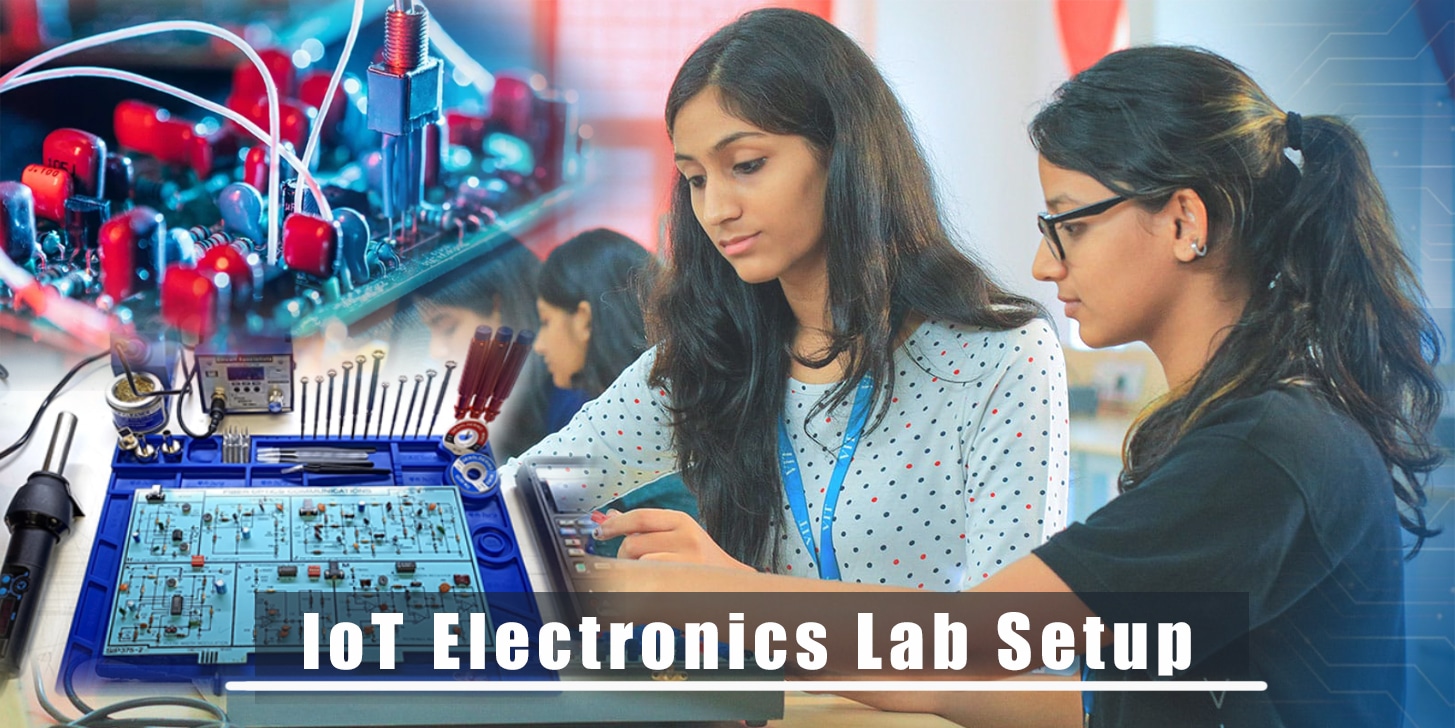The Internet of Things (IoT) has become a good idea in the rapidly changing world of technology. It allows common objects to connect to the internet and communicate with one another. Strong IoT electronics lab sets are very important for both hobbyists and professionals to have as IoT continues to improve industries and everyday lives. We will explore the functions of an IoT electronics lab setup, as well as the essential parts required to build one up.
A few of Our Installations
What is IoT Electronics Lab Setup?
An IoT electronics lab is a special work area set up with resources, tools, and equipment meant for IoT project development, prototyping, and experimentation. It acts as a creative playground where people may experiment with all facets and tools of IoT technology, from simple sensor integration to complex automation and data observation.
Uses of IoT Electronics Lab Setup
Prototyping and Development
Allowing the prototyping and development of IoT solutions is the main goal of an IoT electronics lab setup. A dedicated area must required with all necessary equipment and tools, whether you’re creating a wearable device, smart home project, or industrial observation system.
Education and Learning
For professionals, enthusiasts, and students wishing to deepen their hold of IoT concepts and technology, IoT Center of Excellence lab settings are a priceless resource. practice conducted in a lab setting enhances practical skills and improves understanding of theoretical knowledge.
Research and Innovation
Using IoT electronics lab arrangement, researchers and innovators can carry out tests, verify theories, and search for new concepts. These labs act as breeding grounds for ground-breaking ideas that motivate technical progress in different kinds of fields.
Testing and Validation
It’s difficult to complete tests and validate the functionality and dependability of IoT solutions before using them in practical projects. An electronics lab setup offers the tools required to carry out thorough testing, spot possible problems, and repeat again and again improvement solutions.
IoT Electronics Lab Setup Components
Let’s now dissect the fundamental elements of a thorough IoT electronics lab setup:
Hardware
Microcontrollers: The brains of Internet of Things devices are platforms such as Arduino, Raspberry Pi, and ESP32, which offer processing power and interface capabilities.
Sensors: A comprehensive variety of sensors, such as motion, temperature, humidity, and more, allow Internet of Things (IoT) devices to sense and collect environmental data. These kinds of sensors are useful in different fields according to the requirements.
Actuators: By carrying out actions in response to input data, actuators like motors, servos, and relays enable the Internet of Things devices to communicate with the real world and perform the action according to the input.
Communication Devices: In today’s life, communication devices are a very common need for everyone. 95% of people use wireless devices for better communication. Wireless connectivity is only made possible via WiFi, Bluetooth, Zigbee, and other communication modules. This enables data sent and received between the Internet of Things over local networks or the Internet.
Power Supplies: To guarantee the continuous operation of IoT devices throughout testing, dependable power sources, such as batteries, AC adapters, and power banks, are necessary.
Software
Integrated Development Environment (IDE): IDEs that offer a unified environment for creating, compiling, and uploading code to microcontrollers include Thonny, PlatformIO, and the Arduino IDE.
Programming Languages: Programming skills in Python, C/C++, and JavaScript are required to construct firmware and software for Internet of Things applications.
Simulation Tools: Proteus and Tinkercad are two examples of simulation tools that allow designers to simulate the behavior of electronic circuits and Internet of Things systems prior to their actual implementation, hence virtual prototyping is made possible through it.
Data analytics platforms: Tools such as MATLAB, cloud-based services (AWS IoT, Google Cloud IoT), and Python libraries (NumPy, Pandas) make it easier to observe and visualize data, allowing developers to extract insights from IoT-generated data.
Tools and Equipment
Prototyping boards and breadboards: These offer a way to quickly construct and test electronic circuits without the need for welding, which speeds up the prototyping process.
Multimeter: A most important tool for properly fixing and testing circuitry, a multimeter monitors voltage, current, and resistance.
Welding Iron and Related Tools: Soldering components onto PCBs (Printed Circuit Boards) requires the use of welding irons and related instruments in order to create stronger connections.
Oscilloscope: An oscilloscope helps with fixing and circuit optimization of performance by providing a detailed proper representation as well as analysis of electronic signals.
3D Printer (Optional): A 3D printer can be a useful addition to an IoT electronics lab setup for producing custom covers and mechanical components.
Conclusion
The backbone of innovation in the field of IoT is an IoT electronics lab setup, which provides an ideal environment for testing, knowledge, learning, and development. IoT technology is a big sector in which experts search and create new things by combining important components and sources. Searching in an IoT electronics lab setup opens doors to uncountable possibilities and provides you the power to create the future of connected devices, no matter your role whether, you are a student, hobbyist, or entrepreneur.





